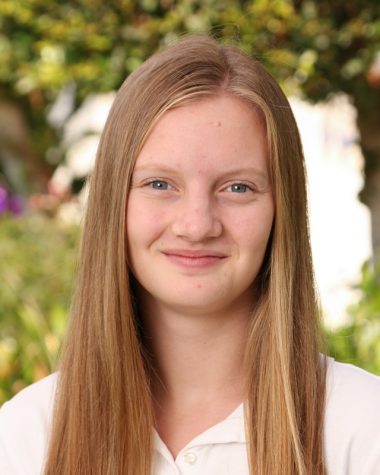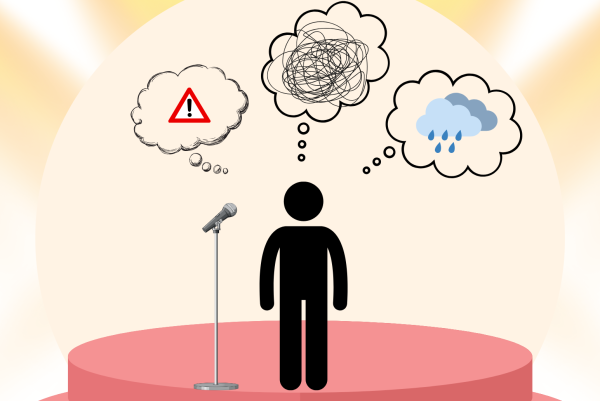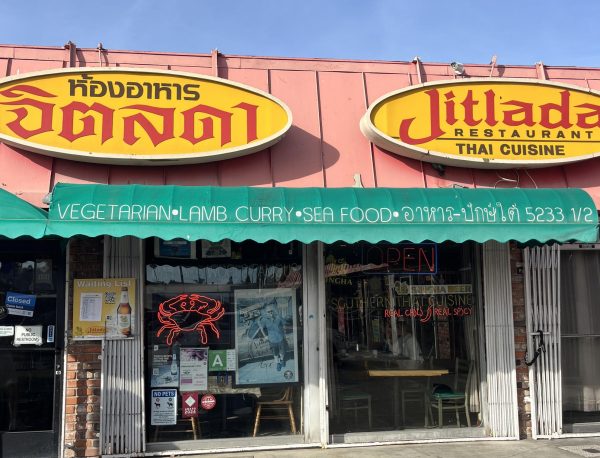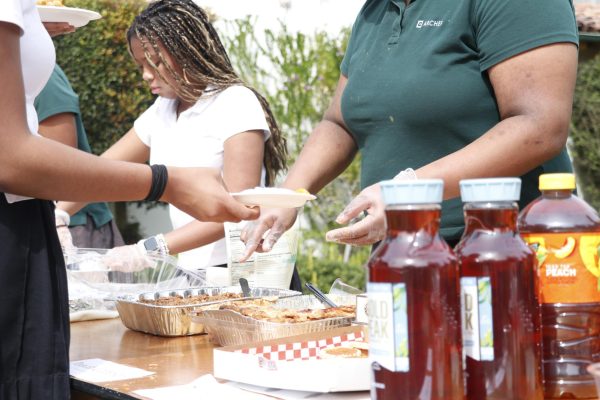Column: Coffee Coffee Coffee

Photo credit: Anna Allgeyer
A wonderful latte from Profit, a gourmet coffee shop, showcases the barista’s talent for latte art.
Ask any of my friends and they will tell you the same thing: Anna loves coffee. Coffee is a lifestyle, a delicious, wonderful thing filled with the joy and hope of tomorrow in an obtainable-today package. The smell of my mom making her morning cup is sometimes the only thing that can drag me from my bed. Lorelei Gilmore’s famous quote, “I need coffee in an IV,” is one of my guiding principles.
But really, what is coffee? Coffee beans are not actually beans — but seeds. The “bean” is the seed from the center of a coffee cherry, a bright red fruit of a Robusta or Arabica plant. This cherry is harvested and then goes through a series of drying, fermenting and hulling to bring out the best in coffee.
Then, the coffee is roasted to different stages for different markets. For example, espresso roast will be roasted for up to fifteen minutes, where the sugars in the bean will start to caramelize and burn, producing a rich shot of espresso later on. According to the National Coffee Association USA, the beans are tasted by a “cupper”, or professional coffee taster for quality. (If that is not my job in ten years, please politely alert me that I have failed.)

Unripe coffee cherries at a polyculture farm near Monteverde, Costa Rica.
The roasting occurs at around 550 degrees Fahrenheit, and once the beans reach 400 degrees Fahrenheit, they will release caffeol, an oil that gives the flavor we know and love, and turn dark brown. Beans are then exported to various countries and companies to be distributed to the mass market.
Coffee is also proven to be beneficial to your health.
According to a UCLA study, coffee consumption can be linked to a decrease in the development of type two diabetes. Coffee is also filled with antioxidants and can be linked to a 40 percent decrease in occurrence of liver cancer, and a lower risk of cardiovascular disease.
The New York Times notes that these findings are only consistent with black coffee, not Venti Frappucinos with inordinate amounts of sugar and fat. Black coffee contains less than 5 calories per cup, meaning it does not significantly impact your daily caloric intake.
And then there’s the matter of how you take your coffee. I’ve found that it’s an almost religious preference, and have seen many a re-order at Starbucks. Personally, I’m a two percent latte fan with a dash of chocolate kind of gal. The acquisition of an espresso machine in our house has definitely made this drink accessible all the time, for the “it’s ten p.m. and my essay is due tomorrow” kind of cup, as well as the traditional morning sip.
This is my recipe for how to make the most delicious espresso drink at home — no fancy equipment needed. By traditional definition, it isn’t exactly a mocha or a latte, but delicious nonetheless.
Magical Morning Mocha Latte:
Ingredients:
- three oz milk of choice
- one shot espresso (or one oz incredibly strong coffee)
- one teaspoon favorite hot chocolate powder
Instructions:
- Place milk in a mason jar with a lid, and shake vigorously for about a minute until the milk has doubled in size.
- Remove the lid and microwave for around 40 seconds until the foam is all settled on top.
- Pour your espresso into a mug, followed by the warmed milk and chocolate.
- Stir, and then spoon the milk foam on top, followed by a dusting of chocolate powder.

Anna Allgeyer became an Oracle columnist in 2016. Her column focuses on food in relation to the life of an Archer Girl. She writes about food related...













Alexandra Chang • Mar 6, 2017 at 1:13 pm
Amazing as usual. I’m excited to try the magical mocha latte– it sounds nothing short of magical!
Cat Oriel • Mar 1, 2017 at 11:48 pm
Wow! You know so much about coffee. It is so cool that you got to visit a polyculture farm in Costa Rica! This Magical Mocha Latte sounds great. Your column is always awesome. Keep up the great work, Anna!